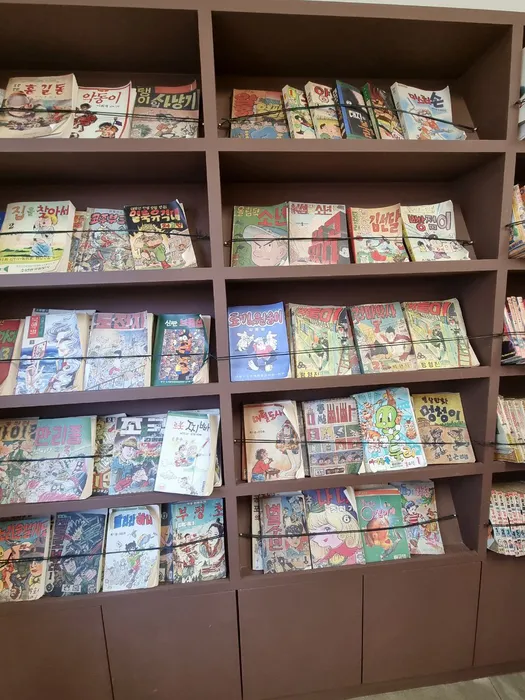
Today I invite you to the past! Let’s take a look at Korea a few years ago.
The thing that I really like in Korea is how government and people respect and try to save their history. And they do it in a very unique and creative way. One of the examples is Donuimun Museum Village, which was officially opened in 2015 (If I am not mistaken).
Short history
Donuimun was the main gate of the west Hanyang city wall which was first built in 1396 but then was closed in 1413 because of the damage to Gyeongbokgung Palace.Then the gate was renamed New Saemun and the area inside it was called Saemunangol or Saemunan district.
In 1915 during the Japanese rule, Donuimun was demolished in order to expand the road.
From the 1960s individual houses were renovated into tutorial rooms and prestigious schools, so that area was associated with private education. But later these schools were moved to the Gangnam area.

In the 1990s, many houses were transformed into restaurants.
When most of the buildings were demolished, it was decided to create a small park here. However, the Seoul government wanted to remember the history and importance of that area, so they decided to build a Donuimun Museum Village.
Briefly about the Donuimun Museum Village
The Village is located in the centre of Seoul, and it is surrounded by modern buildings. Here in the village, we can learn how people in Korea lived in the 50s’, 60s’, 70s’… until today. We can see how that area has changed during the past centuries.The main purpose of the village is to save the history of the Saemunan area
 |
| Teenagers’ game |
Also, it is possible to feel the Korean culture by doing some crafts by yourself, trying on Korean dresses, playing old games, etc.
 |
| Korean Manhwa or comics |
So, let’s go inside the village and take a walk around it.
And there is No Entry Fee!
 |
| Entrance |
 |
| A map of the village |
Also, today due to Covid-19 you need to pass by that office to leave your data and to check your temperature. After that you will get a sticker, so you can easily enter any building inside the village.
 |
| A map of saemunan village |
Village buildings
Each building in the village is dedicated to a particular topic. It can be a historical museum, it can be an installation of a Korean house of the 50s-90s, it can be a barber store, a game hall, etc.Some of the buildings tell about the life of particular people. Also, I liked that they show photos of different cafes, and stores before the reconstruction and after. They showed what was at that place before.
Look at that construction layout (I am not sure how people really call it). It is really painstaking work. Each tiny piece of the layout looks real.
Also, there was a house of one couple, and a woman was treating people there. So there were different traditional medical kinds of stuff.


As I already said there are different experience programmes in the village too. You can not just look at the history, you can try it, experience it, and feel it. You can try Korean traditional paper crafting, drawing, calligraphy, musical instruments, etc.
One of the most popular experience programmes is Life in Seoul. You can teleport back to the 50s-90s and learn how people lived at that time. You can see with your own eyes Korean houses, try on their clothes, touch their home appliances, etc.

Temporal Exhibitions
Besides the regular exhibitions, there are also temporal ones. And they are very different. It can be an art exhibition, it can be a book exhibition, etc. You can check the current exhibitions in the information office or on the official website.Most of the buildings in the village remind traditional Korean houses. So it is nice even just to walk along the tiny streets.

The official website of the village: www.dmvillage.info
Comments
Post a Comment